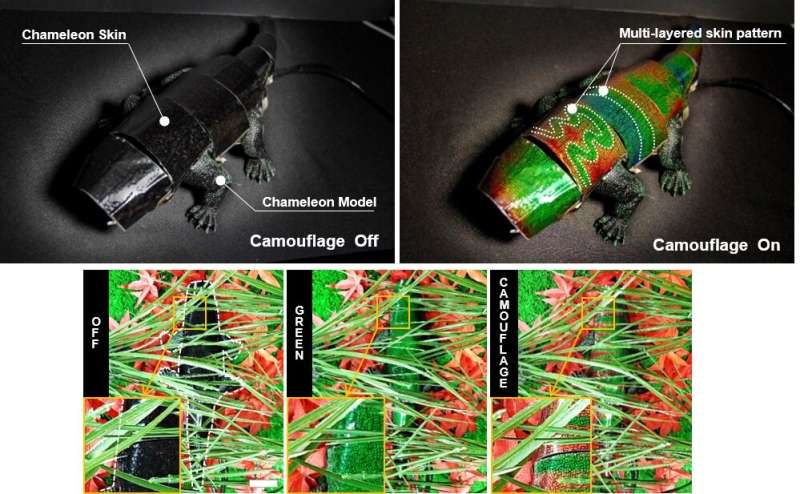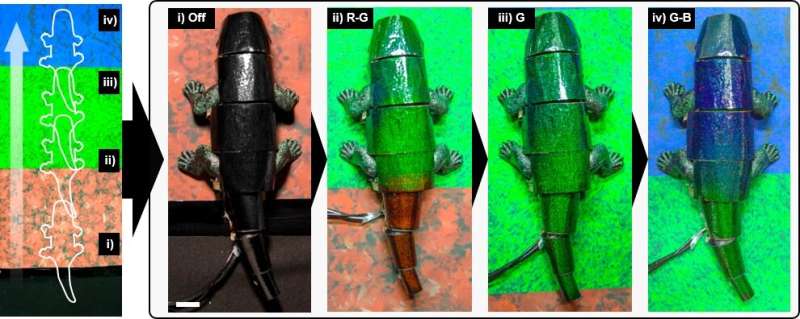Demonstration of Chameleon-inspired soft robot under camouflage-off and camouflage-on mode. Credit: Seung Hwan Ko
A team of researchers working at Seoul National University has developed a soft robot chameleon that can change its colors in real time to match its background. In their paper published in the journal Nature Communications, the group describes their multi-layer skin design and possible uses for it.
In the animal kingdom, many species change their appearance to prevent predators from seeing them—the chameleon is perhaps the most famous example. The famous lizard is able to change the colors of its skin to blend in with its surroundings. In this new effort, the researchers have attempted to match that ability with a robot chameleon.
To create their robot, the researchers started with a skin layer made of liquid ink that could be made to change color by applying a small amount of heat. Doing so forced the particles in the ink to form into helical structures that reflected light in specific wavelengths. Different amounts of heat created structures of different sizes, allowing for displaying virtually any desired color. The team then created a second skin layer made up of a network of heater strips. Next, the researchers applied the skin to a model of a chameleon they had created. Then they added color sensors to the belly and circuitry to the robot's insides to allow it to crawl forward, use the underbelly sensors to recognize colors, process the information it received and then to send signals to the heater network. The researchers also added some predesigned color patterns to allow the robot to change not just its skin color but pattern colors it displayed on its skin.
Camouflage demonstration of the chameleon robot with S‐ATACS. Credit: Seung Hwan Ko et al.
RGB Coloration performance of the ATACS. Credit: Seung Hwan Ko et al.
The researchers demonstrated the robot's ability to change color on demand by posting a video of it crawling over a panel with different colored sections. The robot did not simply change color all at once; instead, it changed only the color of the skin over the colored section—as it crawled, it looked as if it were slowly filling up with different colored ink. They suggest their robot could be used for more than just military applications—they envision it being used in fashion and art displays, as well.
Real‐time comparison of the ATACS with feedback control and without feedback control, under external temperature disturbance. Credit: Seung Hwan Ko et al.
Running ostrich demonstration of multi‐layered ATACS. Credit: Seung Hwan Ko et al.
Instantaneous crypsis of the chameleon robot. The robot crawls on the background and changes its skin color according to the background color. Credit: Seung Hwan Ko
More information: Hyeonseok Kim et al, Biomimetic chameleon soft robot with artificial crypsis and disruptive coloration skin, Nature Communications (2021). DOI: 10.1038/s41467-021-24916-w
Journal information: Nature Communications
© 2021 Science X Network

























